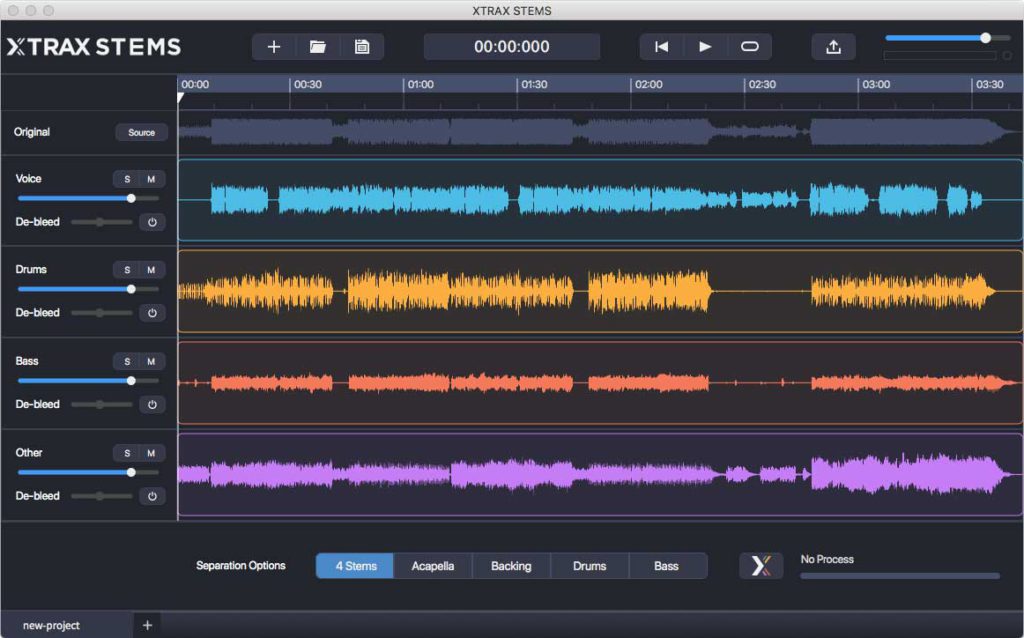In the music creation world, you likely hear the word stems used quite a bit. It simply means small clips of a track, each individual element of a song. The drums, lyrics, guitar and melody are all stem examples.
Stems allow music producers to have more control over the final output of their tracks. They break down each element of a song, which can then be altered to create a whole new sound. The thought of stems is often quite intimidating, as seeing your song completely broken down into small sections looks intense. But, you don’t have to edit each individual element.
It simply allows you the option to. If you want to change up the tempo slightly, you can do this without effecting all other parts of your song. You don’t have to change everything, just the small pieces that need tweaking. Editing one stem allows you to make changes without changing the whole sound of the song.
What is a music stem?
Music stems can also be known as song stems. They’re an audio breakdown of your track. Each stem becomes its own file, but when put together, they make one song. As a music producer, they allow you to edit the song to make it exactly what you’re looking for, instead of changing every element of a track.
Typically, stems will break down into four parts; melody, instruments, bass and drums. When you play each stem together, it will sound like your original, unedited file. However, you can play each stem on its own and this is where you can begin editing. Stems are usually used by DJs because it makes it easy to remix a song.
Work on each stem bit by bit. Allow them to fall into the right place. Build the track as you go. Start with one element and then work from there. Perhaps you don’t even need to edit all the elements, this is why it’s important to start with one stem and continue to add to it because trying to change everything could ruin your song.
What is a multitrack?
A multitrack is broken down even further. It’s a stem that has been separated into smaller parts. For example, if you have a drum multitrack, you’ll have the kick, snare, toms etc all in a different file. They’ll all be their own files. The difference between this and a stem is, a stem would be just the drums. Not a breakdown of the drums.
Typically, people work with stems. It’s unlikely as a music producer you’ll be asked to provide anyone with a multitrack. If you are, they’ll specifically ask for one. However, normally when asking for elements of a track, people mean stems because these can be manipulated and altered much easier. Editing multitracks is a lot more time consuming.
You need to be extremely precise editing multitracks because they’re even smaller elements of a song than a stem is. It’s a lot easier to mess a song up by changing tiny parts of it. You’ll likely find it’s easier to edit the drums as a whole as this is the sound you’ll hear throughout your song. But, it’s important to know the difference.
How to use a music stem
There are various ways you can use a music stem. It isn’t just music producers that typically use them. DJs, and video content creators will use them too to ensure they get the best sound possible for their work. In fact, stems come into a lot more professions than people will often realise. Here are some examples of how to use stems:
Music dubbing
If you’re looking to add your own voice-over or lyrics to a piece of music but need to remove the original lyrics, you’ll need to tap into the stems. A lot of podcasters or YouTubers will take the backing track from a song and use it within their work. They don’t always want the lyrics because it will affect how you hear their audio over the top.
Altering the length of a song
Using stems, it becomes easy to change the length of a track. You can extend various parts, duplicate them or slow them down. Alternatively, you could speed things up or clip certain parts to make the track shorter. This is perfect for anyone wanting to create a video and add music. You can clip the track perfectly around your footage.
Editing your music
The easiest way to edit your music is by using stems. This is the most common use of stems because they allow you to play around with different elements. If you need to slightly tweak your vocals, you can easily do this without affecting the rest of your sound. Music producers will use stems in their day-to-day tasks.







